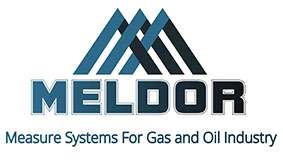Digital high-temperature 2-axis capacitive tilt sensors (inclinometer)



Introduction: Navigating the World of Tilt Sensors
In the realm of modern technology, precision measurement plays a pivotal role in various industries, from construction to automation. One of the remarkable innovations that has revolutionized the way we control and measure spatial orientation is the tilt sensor, also known as an inclinometer. These ingenious devices are designed to measure the angle of inclination and roll of objects in relation to the gravitational vector. They provide an efficient means of monitoring spatial positions, boasting impressive precision, high resolution, and enhanced reliability. In this article, we will delve into the fascinating world of tilt sensors, exploring their working principles, applications, and the cutting-edge features that make them indispensable in the industrial landscape.
Unveiling the Core Structure: Anatomy of a Tilt Sensor
At the heart of a tilt sensor lies a meticulously crafted design that enables it to perform its remarkable task. Structurally, the primary sensor meter is a cylindrical chamber that contains a non-conductive liquid. This chamber is formed by the inner cylindrical surface of the housing and two plane-parallel plates housing measuring electrodes. The interaction between these components allows the tilt sensor to precisely determine the angle of inclination and roll of an object with respect to the gravitational force. This innovative structure has been refined over years of research to ensure accuracy, reliability, and durability.
Defying Expectations: The Evolution of Tilt Sensors
The journey of tilt sensors has been marked by relentless innovation and the pursuit of excellence. These sensors are the culmination of extensive research efforts aimed at creating devices that outperform even the most advanced technologies in the field. Unlike traditional quartz accelerometers, such as those developed by Honeywell and Japan Aviation Electronics Industry, Ltd., tilt sensors present a distinctive set of advantages. They offer heightened accuracy, an extended temperature range, and unparalleled resistance to mechanical stress, withstanding forces of up to 3500g.
Temperature Tolerance and Linearity: The Tilt Sensor Advantage
One of the standout features of tilt sensors is their exceptional performance across a wide range of temperatures. The specialized design of these sensors allows them to maintain non-linearity without the need for intricate calibration dependencies. This remarkable trait holds true throughout the entire temperature spectrum, including temperatures as high as +135°C, with deviations no greater than 0.1% of the full scale. This ability to deliver precise measurements under extreme conditions sets tilt sensors apart in the realm of angular coordinating devices.
Versatile Applications: Where Tilt Sensors Shine
The versatility of tilt sensors extends to a multitude of applications across various industries. These sensors are not only capable of standalone operation but also find themselves integral to automatic position stabilization systems for industrial equipment. Some of the noteworthy applications include:
Industrial Equipment Control: Tilt sensors are used to monitor the position of crucial components such as crane booms, snowplow blades, excavator buckets, dampers, and hatches.
Rocking Machines Automation: In the automation of rocking machines, tilt sensors play a pivotal role in determining the angle of inclination of balancers.
Measurement-While-Drilling (MWD) Systems: Tilt sensors find utility in MWD systems, contributing to accurate measurements during drilling operations.
Stability Maintenance: They are utilized in systems designed to maintain the stability of diverse industrial equipment, ensuring safe and efficient operation.
Preventing Accidents: Tilt sensors prevent accidents by monitoring the overturning of valuable cargo during transportation and controlling angles in ventilation duct valves, rotary windows of ventilated facades, and more.
Autonomous Accident Control: They are part of autonomous mobile accident control systems, aiding in the control of trolleys and monitoring the functionality of surveillance video camera drives.
Exceptional Features: The Tilt Sensor Arsenal
Tilt sensors come equipped with an array of exceptional features that contribute to their widespread adoption:
Linear Output Signal: The sensors boast a linear characteristic in their output signal, ensuring accuracy in measurements.
180-Degree Measuring Range: With a measuring range spanning 180 degrees, tilt sensors offer comprehensive coverage of spatial orientation.
Temperature Stability: Tilt sensors exhibit no temperature hysteresis in the measured signal, ensuring consistent performance across varying thermal conditions.
Non-Contact Measurement: The concept of non-contact measurement eliminates the need for complex mechanical structures, simplifying installation and operation.
Integrated Electronics: Tilt sensors incorporate integrated sensor electronics, streamlining the measurement process and enhancing overall efficiency.
Durability and Maintenance: Tilt sensors are renowned for their high service life and minimal maintenance requirements, ensuring prolonged and hassle-free operation.
Precision and Drift: These sensors exhibit low zero drift and low moment of inertia, contributing to the precision and stability of measurements.
Conclusion: Precision Redefined
In the dynamic landscape of modern industry, precision is not just a requirement—it’s an expectation. Tilt sensors, with their unmatched accuracy, versatile applications, and remarkable features, have redefined how we measure and control spatial orientation. From ensuring the stability of industrial equipment to preventing accidents and enhancing automation, these sensors have transcended expectations. As technology continues to advance, tilt sensors stand as a testament to human ingenuity, bridging the gap between complex measurement needs and elegant solutions.

